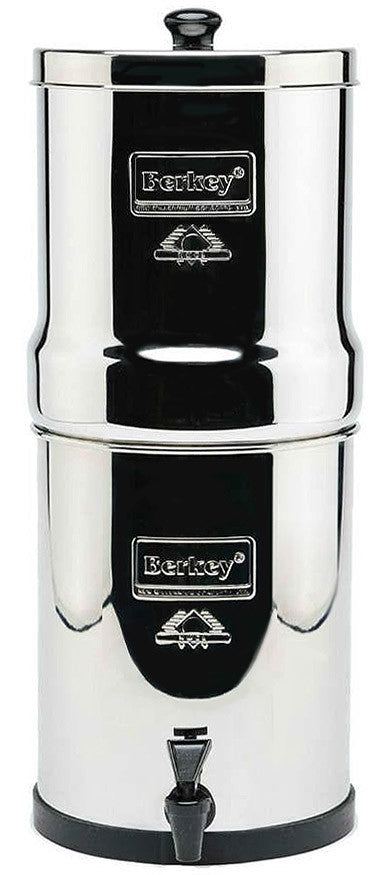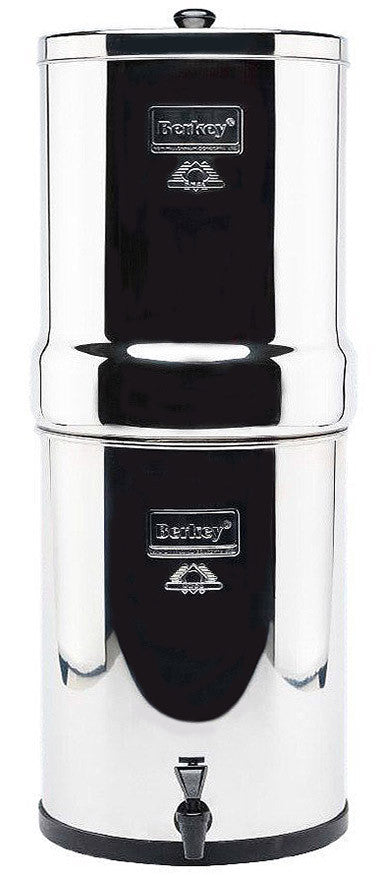Metallic Tasting Water: Drinking Water Contaminated
 Once in a while, homeowners find their drinking water at home has an unpleasant, bitter, and metallic flavor. You could expect faucet water to taste neutral; however, as a matter of fact, this is NOT true in all situations.
Once in a while, homeowners find their drinking water at home has an unpleasant, bitter, and metallic flavor. You could expect faucet water to taste neutral; however, as a matter of fact, this is NOT true in all situations.
Water comes in various flavors, some clearly defined for water supply regions. Several factors can account for the unpleasant metallic taste or smell of water.
Homes or commercial buildings with old iron pipes might be the ones to blame for water that tastes like metal.
Notwithstanding, with more than three hundred water contaminants in water supplies throughout the United States, it's essential to pinpoint why your water has an aftertaste like metal so you can remedy the issue and return to drinking delicious-tasting water.
Water flavor fluctuates depending on where you live in the United States. Some individuals state that tap water has an aftertaste like metal. This metallic, harsh taste normally results from the higher amounts of metals, such as copper and zinc, ordinarily utilized in homegrown pipe networks.
Water sitting stale in the pipework can take on a more articulated flavor. The metallic taste is often more pronounced in larger residences with broad pipework.
Water supplies with more significant chlorine levels are additionally inclined to metal taste as the substance responds with the materials in your pipes and kitchen machines.
Thus, more than once, heating similar water can reinforce the flavor. The issue doesn't represent a danger to well-being, and running your tap for a couple of moments ought to take care of the issue.
1.1 Causes of Metallic Tasting Water in Tap Water
There are several possible reasons why your water tastes metallic. The most probable explanation is the presence of the actual metal substance. Trace metals, such as iron, manganese, zinc, and copper, are common water pollutants that can impart an unpleasant metallic taste to water.
More established, corroded city pipes or more established private lines, especially those produced using iron, can also be a typical wellspring of these metal toxins.
Pipes made of metal, Copper, or stirred steel generally have a life expectancy of eighty (8) to one hundred (100) years. Assuming your lines are from the mid-1900s, you must check if they are made of lead to guarantee that no lead is tainting your water.
If your water source is well water, your guilty party is undoubtedly iron brought about by leakage or corrosion.
Another explanation is that your water might taste metallic due to low pH (likely hydrogen) levels. These levels measure the sharpness or basic characteristics of a substance. Low pH levels are sometimes alluded to as "soft water" and can give the water a sharp or acid-like taste that looks like metal. pH levels shift and can be impacted by various elements.
A pH level under seven (7) will produce a metallic taste or water that tastes like metal, yet the typical range is 6.5 to 8.5. You can get a pH level test pack from the store to test your water.
Trace Metals
If your tap water has a recognizable metallic taste, it might contain metals. Metals can penetrate your water in various ways, prompting metallic-tasting water.
Municipal Water Supply
The public water system adds synthetic substances to clean water for safe drinking. These synthetic compounds and minerals, like iron, can periodically react with your home's lines or plumbing apparatuses. Another explanation is your city or region's old water supply framework, where metals can saturate city water as it travels from the treatment plant to your home.
Old Pipes
If you live in an old house, you will deal with this issue more than in new houses. Houses built almost a hundred years back were regularly worked with iron lines, copper pipes, or excited steel pipes, with the greatest life expectancy of eighty (80) to one hundred (100) years.
A layer of zinc was applied to these steel lines to broaden their life expectancy. Pollutants, for example, lead and iron, are, in many cases, present in zinc.
Following quite a while of purpose, the water that goes through a home's line system can consume the galvanized pipe wall. The zinc inside isolates into little stores of iron and different minerals, which get comfortable in the water, possibly causing a metallic taste and a ruddy, earthy-colored tone.
Likewise, if your home was worked during the mid-1900s, it might have lead solder pipework, giving your water a metallic taste. These lines were prohibited with the marking of 1986 Amendments to the Safe Drinking Water Act.
If you suspect lead is causing a metallic taste in your water, consult a water expert or master plumber immediately.
Low pH or Soft Water in the Water Supply
Another reason for a metallic taste in your water is the pH level, which can indicate acidic water. The neutral value, neither acidic nor alkaline, for pH, is seven (7).
When the pH level of water falls below 6.5, it is labeled "soft." Water with low pH levels contains fewer minerals and is frequently portrayed as tasting odd or sharp, a taste which, to certain individuals, looks like metal.
It can likewise show the presence of metals like iron, lead, and Copper.
1.2 Metallic Taste Due to Plumbing Systems
Metallic-tasting water isn't consistently a direct result of your mains supply. Sometimes, domestic pipes can provide water with a severe taste of metal. Many homes in the U.K. have Copper, iron, or galvanized pipework.
A pipe traces back to the Victorian era, and the more established the lines, the more probable there will be consumed channels releasing metal into the water framework.
However, assuming you live in another house and your water tastes like metal, this will probably be due to synthetic substances or chemicals in the main water supply.
1.3 Harmful Contaminants in Water That Tastes Like Metal
Chlorine added to the water supply isn't destructive, but certain individuals are more sensitive to its taste and smell. Your well-being isn't in danger if your water tastes metallic.
However, if you have more established plumbing, including a lead supply pipe, your water supply could contain harmful components.
Different Methods to Treat Water Taste Metallic
 Activated Carbon Adsorption Method
Activated Carbon Adsorption Method
Adsorption is an extremely common strategy for eliminating heavy metals in water and is likewise an entry-level removal technique. Its standard procedure involves adsorbing the heavy metals in water through enacted carbon with pores on superficial-level areas and strong adsorption.
When the activated carbon is completely saturated with water, heavy metal particles are adsorbed into the voids created by the initiated carbon to accomplish the removal purpose. As such, the models utilized incorporate activated carbon water filters, clay water filters, and ultrafiltration water filters.
If you choose activated carbon adsorption to eliminate heavy metals, you will surely enjoy the benefits of regular, contamination-free, efficient, and no wastewater.
KDF Electrolytic Replacement Method
The electrolytic substitution technique eliminates heavy metal particles in water by supplanting dormant or inactive metals with active metals. High-purity copper-zinc compound (KDF) is a suitable electrolytic substitution material.
When KDF is placed in water, a microelectrochemical response occurs. The zinc particles in the compound are delivered into the water, and the heavy metal particles in the water, such as lead, mercury, Copper, nickel, cadmium, arsenic, antimony, and so forth, are supplanted.
For your information, the compound condition of KDF to eliminate weighty metals is as per the following: Zn/Cu/Zn+Pb(NO3)2→Zn/Cu/Pb+Zn(NO3)2, Zn/Cu/Zn+HgCl2→Zn/Cu/Hg+ ZnCl2. As far as the used machines go, there are ceramic filter water channels and ultrafiltration water filters.
If you choose the KDF electrolytic substitution strategy to eliminate heavy metals, you will surely enjoy the benefits of economy and no wastewater.
Ion Resin Exchange Method
The ion resin exchange technique utilizes the heavy metal ion trade resin to trade heavy metal substances in the dirtied water body to trade heavy metals from the water body to accomplish the reason for treatment.
After the ion exchange treatment, the heavy metal particles in the wastewater are moved to the ion exchange resin and moved from the resin to the regeneration waste liquid after recovery.
With that said, the models utilized incorporate some ultrafiltration water filters. If you choose this ion resin exchange method, you will surely enjoy the benefits of economy, no waste water, and great impact.
Reverse Osmosis Membrane Separation Method
The reverse osmosis R.O. membrane is the filter membrane with the most elevated filtration exactness among water treatment films. The base pore size is all around as large as 0.1 nanometers. In principle, it can eliminate all contaminations, remembering heavy metals for water and producing pure water.
The desalination pace of heavy metals is normally ninety-seven percent (97%) and above. As such, the model utilized is the reverse osmosis water channel, which enjoys the benefits of no contamination, no expansion, and great impact.
Moreover, strategies to manage heavy metal contamination utilizing bioremediation and membrane detachment technology, including phytoremediation, animal restoration, and microbial restoration, exist.
Water Tastes Metallic: What To Do With Your Drinking Water?
 Knowing for sure whether the metal taste is harmful relies upon the source. Iron and zinc, for instance, by and large, will generally make no ill side impacts.
Knowing for sure whether the metal taste is harmful relies upon the source. Iron and zinc, for instance, by and large, will generally make no ill side impacts.
Nonetheless, if your water is tainted with lead rather than iron, the lead in it can be poisonous to you, your family, or potentially everyone in the community.
Assuming your water possesses a flavor like metal, it is ideal to have it tried to make certain of the minerals at the base of the issue. You can find nearby water testing labs by visiting the EPA site and finding your state.
Sometimes, the metallic taste may be tracked down in the water from specific taps in your office or home. If so, note the taps it is coming from to answer an expert or handyman.
Lead in drinking water regularly comes from plumbing associated with lead welds, which were banned in 1986 because of their destructive impacts. Nonetheless, many water pipelines in the U.S. were installed before 1975.
If you are older and live in a long-established building, ensure you know that any lead pipes have been supplanted. Lead pipes were normal in the mid-1900s. If you work or live in an old structure or are another occupant, it is smart to have your lines checked.
That said, water that tastes like metal doesn't need to mean the end of reviving drinking water. Rather than drinking water directly from the tap, one of the better options is to utilize a water filter that kills destructive foreign substances.
There might be a few justifications for your water's metallic taste. The most probable explanation is the presence of the real metal substance. Trace metals like iron, manganese, zinc, and Copper are normal water impurities that can give that undesirable touch of metal.
More established or older, corroded city pipes or more established private lines, especially those produced using iron, can also be a typical wellspring of these metal impurities.
Another explanation is that your water might taste metallic due to low pH (likely hydrogen) levels. These levels measure the acidity or basic characteristics of a substance.
Low pH levels are often called "delicate water" because they give water a sharp or corrosive taste that looks like metal.
Conversely, pH levels shift and can be impacted by a wide range of elements. A pH under seven (7) tastes more acidic. However, the ordinary range is 6.5 to 8.5.
← Older Post Newer Post →





